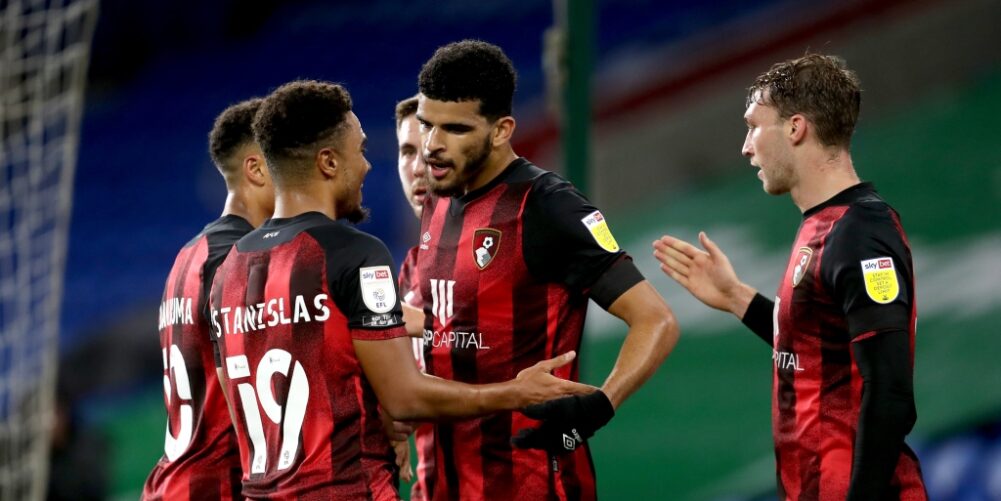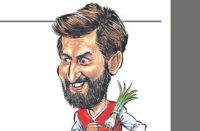WHEN Dominic Solanke was awarded the Golden Ball after England won the U20 World Cup in 2017, few imagined he'd be playing in the Championship three years later.
But lack of opportunity, bad transfers and a precipitous drop in confidence have left a player once regarded as the finest prospect of his generation with everything to prove.
Signed by Chelsea at the age of eight, Solanke scored prolifically for club and country. Twenty goals in 25 games for the Blues' Under-18s. Twelve from nine in the UEFA Youth League. A total of 36 in 70 matches across the England age groups.
Childhood friend Tammy Abraham never matched those numbers and – whilst highly rated – was viewed by coaches at Stamford Bridge as the inferior player.
Solanke, though, returned from a loan at Vitesse Arnhem in 2016 insistent on a guarantee of increased playing time. Unable to secure any such assurance from Antonio Conte, he forced a £3m switch to Liverpool.
It proved a masterclass in poor timing. Whilst Chelsea were hit by a transfer ban that opened the door for homegrown talent like Abraham to flourish, Liverpool signed Mo Salah and blossomed into Europe's most potent attacking outfit.
Solanke played 21 games in his two seasons at Anfield, scoring just once. In January 2019, the striker joined Bournemouth, where he went 38 games without a goal and became an unwitting emblem of the transfer failings that ultimately doomed the Cherries to relegation.
Several factors were ranged against Solanke at the Vitality Stadium, not least the absurd £19m fee that placed unrealistic expectations on the shoulders of a player who had scored just eight times in senior football.
That may be the going rate – see Rhian Brewster's £23.5m transfer from Liverpool to Sheffield United – but it cannot accelerate the learning process of a young footballer.
Eddie Howe's preference for a 4-4-2 system also left Solanke playing as a de facto No.10.behind Callum Wilson.
The 23-year-old made 37 appearances last season, of which 17 were starts. In almost all of them, his average position was more akin to an attacking midfielder.

It's not hard to see why he was utilised in this fashion. Speaking to The Athletic last year, Solanke's youth coach at Chelsea, Adrian Viveash, said: “Dominic had all the attributes. I hadn't seen someone that could play as a No 9 and No 10 like he could in the same game. He could link the play and get in the box to score goals. He could do everything.”
Howe himself remarked that Solanke had the technical ability and passing range to thrive in central midfield and consistently stressed the job that he did for the team.
Yet that donkey work came at the cost of goals. Now, liberated by relegation, the sale of Wilson to Newcastle United and his deployment as an out-and-out striker by new manager Jason Tindall, Solanke is getting into scoring positions far more frequently.
Last weekend's goal against Rotherham was his fifth of the campaign. Solanke also has three assists, meaning he has already doubled his goal contributions compared to last season.
He has attempted an average of 2.6 shots per game, up from 0.9 last term. Shots on target are up by 1.1 and shot accuracy – a strong indicator of proximity to goal – up from 44 to 66 per cent.
Clearly, this improvement must in large part be ascribed to Bournemouth playing in a lower division against weaker opposition. As a team, they are creating more chances.
But a new role as the spearhead in a 4-3-3 formation is demonstrably lowering the striker's workload. In that system, it is incumbent on the players in wide positions – particularly David Brooks – to drift infield and operate in the No.10 position.
Compared to last season, Solanke is attempting fewer passes and crosses per game. Most significantly, the number of completed passes in his own half has dropped from 5.4 per match under Howe to 4.6 under Tindall.
Defensive contributions like aerial duels and interceptions are also down. Ball recoveries, in particular, have fallen by more than 50 per cent. Backward passes are up by an average of 1.2 per match.
All of these numbers reflect a player now operating higher up the pitch – and prospering as a result.

















